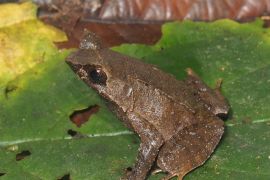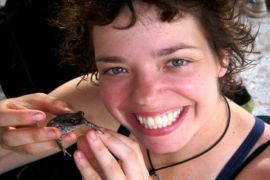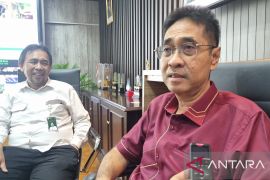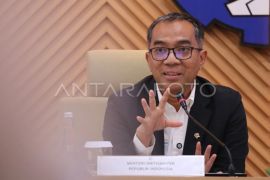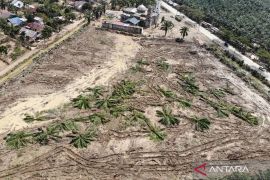PT Freeport Indonesia (PTFI) Corcom VP, Riza Pratama, noted in a statement received by ANTARA here on Saturday that the species, named Litoria lubisi, is a type of large green tree frog that is a member of the Litoria infratrenata family.
Pratama stated that the discovery of the new species was officially published in the international journal Zootaxa 4903(1):117 – 126.
Lubisi was named after Dr. Rusdian Lubis, who served as the Senior VP for work environment and safety at that time.
The finding of this species adds to the long list of discoveries of new species in PT Freeport Indonesia's work area since biodiversity research was conducted in 1997.
Litoria lubisi has a fairly unique physique, with a body size that tends to be large, and can reach 70 mm in length. In addition, the frog looks strong and has a more striking color as compared to other green frogs.
The frog that lives in the lowlands also have a wide mouth with each tooth frame comprising 10 small teeth and a jaw line that is not so pronounced on the surface of the skin.
The frog has three membranes that extend between its four toes, with long legs that strengthen its grip.
The animal's body parts include several colors consisting of yellow on the underside of the body and the tips of the toes, pale blue along the skin folds, and reddish brown in some of the stripes on the abdomen and foot membranes. This frog is found only in the sago forest in Mimika, Papua.
PT Freeport Indonesia's updated media publication states that this research on Litoria lubisi has been conducted since 2006 by two authors and researchers: Stephen Richards from the South Australian Museum and independent researcher Burhan Tjaturadi, who has been working in Papua since 1999, when he joined WWF and Conservation International.
The duo studied biodiversity in the sago swamp forest in southern Timika of Papua and managed to collect a specimen of an additional species that exhibits the morphological attributes of Litoria infratrenata group.
The research was then continued by the LIPI research team, including Mumpuni, Hellen Kurniati, and Evy Arida. After 15 years of study, the research team was finally able to confirm that the species was a new species that had never been recorded in the taxonomic pedigree.
"One of our main challenges in conducting this research was that the terrain was quite difficult. We thank PT Freeport Indonesia for helping us complete this research by providing support during the research. In future, we hope to continue our collaboration with PT Freeport Indonesia to continue exploring natural resources in Papua and advancing science in Indonesia," according to Tjaturadi, an independent researcher involved in this research.
Meanwhile, PTFI Environmental Senior Manager Gesang Setyadi stated that the discovery of new species demonstrates the biodiversity in PTFI's work area.
"PT Freeport Indonesia's work area still has rich potential for flora and fauna that has not been studied thoroughly. For this reason, PT Freeport Indonesia always implements environmental policies, one of which is to contribute to biodiversity conservation," Setyadi remarked.
Apart from partnering with LIPI, PTFI also regularly collaborates with the Natural History Museum of the United Kingdom (NHMUK), South Australian Masters Athletics (SAMA) of Adelaide, and the University of Papua New Guinea (UPNG) in a bid to enrich the treasures of biodiversity in the land of Papua.
Related news: Govt, private sector, universities collaborate against climate change
Related news: Ujungkulon Park records increase in Javanese rhino population
Close
EDITED BY INE
Translator: Muhsidin, Katriana
Editor: Fardah Assegaf
Copyright © ANTARA 2021

